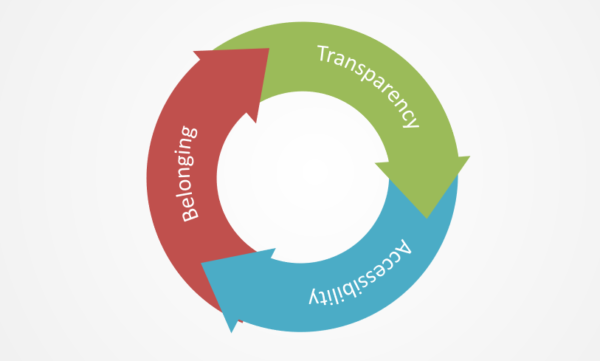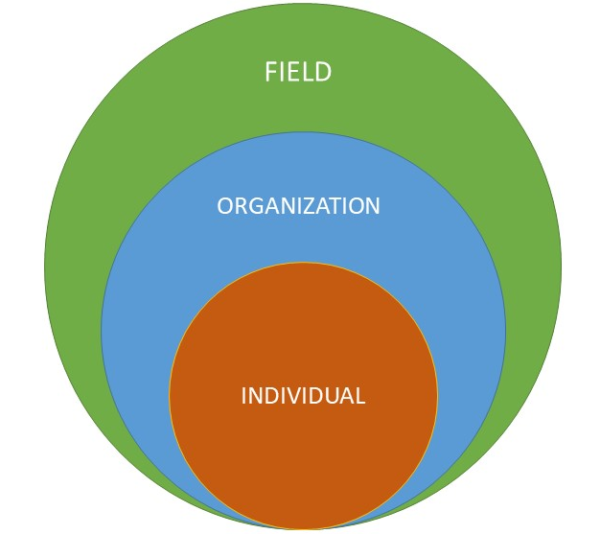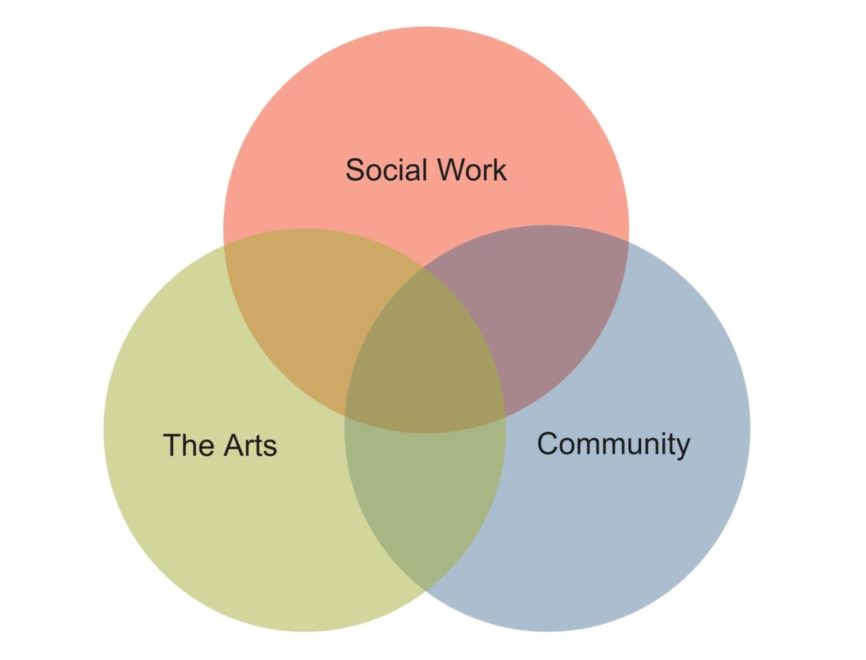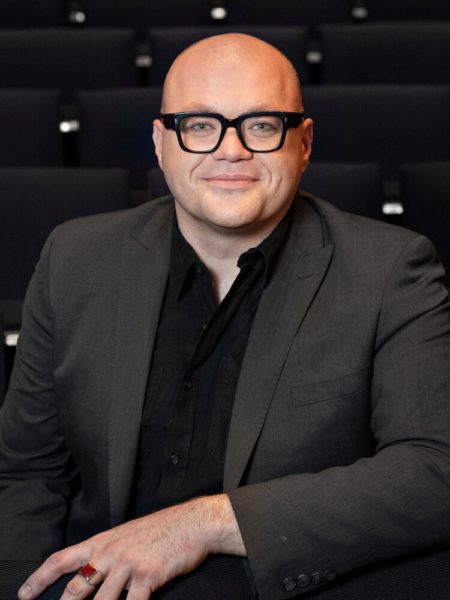What the arts can learn from social work: Cory Garfin in conversation with Tom O’Connor
Cory Garfin recently had a wide-ranging conversation with Tom O’Connor, a marketing and audience development consultant for the arts and culture field, about a piece he had written called “Engaging Arts Audiences in a Time of Trauma.” In it, he lists the six principles of trauma-informed care and suggests how each might lend itself to the arts in a post-Covid world. The six principles are: Safety; Trustworthiness and Transparency; Peer Support; Collaboration and Mutuality; Empowerment Voice and Choice; and Cultural, Historical, and Gender Issues. The discussion covered other ground, as well; below are the highlights from this most sincere interview.
Tom O’Connor is the President of Tom O’Connor Consulting Group. Though primarily an arts marketer, he trained as a social worker and received his MSW from Fordham University in New York City, where he is based.
Cory: We should start by acknowledging that you wrote your post before the murder of George Floyd and the nationwide upheavals that have followed. So even though you were specifically thinking about Covid-19, it feels even more relevant now. Can you talk a bit about the piece and what brought you to write it?
Tom: Absolutely. The framework has applications to any collective trauma we are experiencing at any given time, so the whole construct of what I put forward wasn’t designed for Covid and its use doesn’t need to be limited to Covid. The piece came from my own feeling of—I don’t want to say powerlessness—but a moment of thinking, during the early days of the Covid-19 crisis: “I need to figure out a way to make sense of what it is we’re looking at here because there’s no model for what we’re trying to do with audiences at this moment.” I started to think about my training in trauma-informed care and how you can’t really help a person do anything unless you create a safe and responsive space for them. There’s a lot of conversation about how, post Covid, we can make the spaces of our arts organizations safe in a physical, medical, biological sense. But I didn’t necessarily see a lot of conversation in the field around how we are helping people process the state of their own selves as they’re coming back to our organizations.
Cory: Why do you think we don’t see more people trained in social work, and in the people-centered “systems thinking” that’s core to their training, in the executive suites of organizations?
Tom: I don’t think enough people really know what social workers are. And as an arts and culture field, I just don’t know that we’ve figured out how to properly align ourselves with that particular skill-set around systems thinking. Leaders of organizations have been pulled from the bench of people who are really great at things like production [in the performing arts] or fundraising. These are two incredibly important things and provide key building-blocks for organizations. But they don’t necessarily provide a full and healthy ecosystem that can consistently produce good work, nurture the artists who are working within those companies, and overcome some of the structural inequities that we’re all really reckoning with, finally, now. And I do think that’s a real opportunity in this moment. We talk a lot about the “strengths perspective” in social work training, in terms of leaning on the strength that any individual or community or system possesses and viewing that as the potential solution to the challenges it has. That perspective is a really valuable one right now.
Cory: I think there’s some question, too, about what institutions find valuable and worth protecting. Right now, we’re seeing layoffs instead of dipping into endowments, and contracts with police instead of partnerships with social services.

Tom: When cultural organizations finally reopen, it’s going to be very clear who’s requesting from people a certain sort of respect and obedience to what we want them to appreciate—a return to the old plan, as it were—versus the organizations that are actually providing true belonging in this new reality.
Belonging is at the heart of what we’re really aspiring for with relevance—providing people an opportunity to break down their sense of isolation, and culture does that in such a beautiful way at its best.
And that extends to those who work in the arts and culture, as well—a lot of people get into this field out of a sense of connection and to be a part of something themselves, and I think we should give people in our industry ways to perpetuate that. I don’t know anyone who got into this business to make people feel stupid or unwelcome or unheard.
Cory: That sense of connection is so sorely missed by audiences now, as we’re finding in the results of our national study. And I agree: I don’t think anyone in arts and culture work sets out to be a gatekeeper, but if you’re working in an established system you can kind of become that by default.
Tom: Something I say in my work all the time with marketing consulting clients is that we underestimate how important it is for people to know how much they will need to prepare for our arts experiences. A lot of people simply don’t go to things because they feel “that’s not for me because I’m not prepared for it.”
Cory: In the trauma-informed framework, one of the principles is “transparency.” And I feel like this idea of helping audiences know what to expect from an arts experience—from how to approach the content to what it might feel like to be in the space itself—is one way to provide greater transparency. Why haven’t we seen more of this, traditionally?
Tom: I think the resistance is purely about a fear that existing audience members will feel like we’re talking down to them. For example, in the classical music world, explaining how pieces are structured and what different terms mean only stands to benefit everybody. But there’s a perception that it will feel insulting to the people who are the subject matter experts in the audience. I think we give our audiences too little credit in their ability to see what we’re doing in those moments and to say: “This is being made accessible to somebody who’s new.”
Cory: Right, and: “Doing so doesn’t detract from my experience, but potentially enriches it, as well.” This kind of accessibility makes me think of universal design in web and interactive development. The idea being that enhancing accessibility for some—those who are hard of hearing or with low vision, for instance—enhances accessibility for everyone.
Tom: I totally agree. I often think about a cartoon that I’ve seen on social media. In the image, there’s a school with a group of kids waiting to go in, including a student in a wheelchair, but the front steps and the ramp are all covered in snow. As the adult in the image is shoveling the stairs, the student in the wheelchair says, “Can you shovel off the ramp?” But the person shoveling says, “I’ll get to that when I finish the stairs.” And the person using a wheelchair says, “But if you shovel the ramp we can all get in.”
Just to make this tangible in a different way: I’ve worked in New York theater for 15 years. I’ve seen hundreds of plays. And there are still certain plays—historical ones, mainly—where I don’t know what the hell is happening, because I’m just not prepared. I’m not advocating for dumbing things down, but offering a point of access for people who don’t know all of the historical context only stands to heighten the enjoyment.
Cory: And yet that onus for understanding tends to be mostly on the audience members.
Tom: Right, and to tie it back to social work concepts, I think about how we build so much connection through vulnerability, which Brené Brown talks about so beautifully in her work. An organization that allows for that vulnerability—that makes people feel that if they don’t know something it’s okay to ask—is setting a huge starting place for building a relationship with audiences. As opposed to an organization that says, “If you don’t know it’s up to you to figure it out,” which has a distancing effect.
Cory: Another way of thinking about transparency is hearing the whole story from institutions, even if there are some uncomfortable truths they have to deal with. This comes up a lot in my work when talking to audiences about museums, for instance, and wanting to hear about the provenance of objects. We’re also seeing greater transparency about the imbalance of staff versus executive pay, and about the troubling financial and political ties of Board members. How do you think institutions can build trust with their audiences when the transparency that’s fundamental to that process is exposing such ugly things?
I think there’s redemption to be had but, to me, it’s all about accountability.
Tom: This might be a little bit of a cop out, but I feel like so much of it is about an honest conversation between the power holders in organizations as to how these things that we’re talking about align with their values, and how those values have evolved over time. And then within that, what have been the trade-offs in the decisions they’ve needed to make. We need to have those conversations internally before we can confidently express anything externally.
Cory: Right. What I’m grappling with is that we’re seeing a lot of outpouring of solidarity and statements of support from institutions, but I feel like there’s a lot of skepticism about “Oh, now you’ve discovered that my community’s experienced trauma?” It’s like, nothing has really changed except that you’re saying that now you’re aware of it?
Tom: I think there’s redemption to be had but, to me, it’s all about accountability. The accountability is in naming actual quantifiable changes you are going to make. In New York City, where I live, there are a lot of organizations that are perceived as White supremacist organizations that have more of an elitist mentality to them, that have historically been predominantly White. I also know that inside of those organizations they struggle and grapple with that all the time, but they have not done a very good job of moving the needle. I think what’s been missing is a tangible, quantifiable goal for those organizations to state and then be graded on and held accountable for. I think what’s missing is a clear promise. It’s one thing to say this is how we feel, it’s another thing to say this is our promise. In many ways, it actually comes back to the case for putting systems thinkers in leadership. Because there’s a lot of really good thinking happening within organizations, a lot of good ideas and a lot of different potential paths forward that just don’t have a route toward the top of the organization. When I talk about wanting more systems thinkers as leaders, it’s really to make sure that that doesn’t continue to happen. And that we’re not necessarily thinking that it’s up to one person at the top or the people in the C suite. There’s a lot going on in organizations at every single level that can present solutions to the challenges that we’re facing right now, and so much about being a good leader is unlocking those areas to feed into one another.

Cory: Even before this moment of multiple crises, many of the institutions I work with have been talking about shifting their focus to be more community-centric places where this kind of urgent and even uncomfortable dialogue can happen. My concern is that the brunt of this community-facing work will be carried out by front-line staff, who are already being asked to do a lot, often for not very much pay. And now we’re putting on top of that the kind of trauma-informed work that a social worker might be doing. It’s really deep, heavy labor we’re going to be asking people to do, and I really am concerned that it’s asking too much.
Tom: I would hope that any leader of an organization that is tasking their front line or specific departments with this type of work is putting their money where their mouth is in terms of training and professional development. And there are a lot of resources for this kind of training through the National Alliance of Social Workers, for example. But I also want to grab onto one word that you said, which is so apt: you said a “shift” to a community centered or community driven perspective, and I want leaders to spend a lot of time with that word “shift.” I want them to think about what we are shifting from, and why we are where we are in the first place. And if they can demonstrate that they’re working to understand and ameliorate whatever that original state is, I think that a lot of the work that’s being asked of front-line or junior staff will feel like it’s coming from a full sense of integration with an organizational vision and a mission. If you’re not changing anything at the top and maybe doing one or two more plays by Black playwrights every season or two [in the case of a theatre], and not doing a lot of high-level interrogation of your organization, it’s going to be really hard to ask those junior staff to lead a change from the bottom up.
Cory: At the risk of being overly pessimistic…workers in the arts are already subject to pretty high burnout rates. And the same is true, from what I understand, of social workers. So, putting those together, it seems superhuman to try and ask people to provide both arts administration and this level of community care. So as workers in the arts, how do we do the right things for our audiences, ask the right and challenging questions, support our communities in thoughtful ways, but then also look out for our own health and well-being at the same time?
Tom: I want to come at this first from being an arts marketing consultant and then I’ll come at it from being trained as a social worker. As an arts marketing consultant one of the things I say most often is that doing everything is not a strategy. There are a million different tools and a million different things that we could be doing to quote unquote reach people, but if they’re not in alignment with a larger strategy they’re just a waste of time and energy. So when we are thinking about shifting to new models and ways of thinking and being in our communities, we need to have an honest conversation about what we can stop doing, about what things we are doing that are not serving those larger goals and can just go away to make bandwidth.
On the social work side of things, the burnout often comes from the enormous caseloads that people are carrying, and the lack of dedicated time to process and heal from vicarious or secondary trauma. There’s an expression that we should “give from our abundance, not from our core,” otherwise we cannot give for too long. So when people are overworked and underfunded, which is often the root of the problem, that can’t be sustainable without sacrificing from their core. And I think that’s an important thing to remember. The way to prevent that comes back to the systems approach. At the micro level: What are the needs of individuals to carry out that work? At the mezzo level: What are the organizational needs to make sure resources are available to make that work meaningful, sustainable, and integrated? And at the macro level: What are the resources needed for our field to prioritize this work and create structures and networks, wherein people can get ongoing support from their colleagues? In that latter category, I think most about funding and stated funder priorities.
When people are dealing with their own sense of burnout, there’s a need to just create space to talk about it and process it, which is a lot of what trauma-informed care is about, too. Anybody who’s feeling like: “I can’t meet the needs of this job” or “I can’t do enough, I can’t make a difference,” that’s not only self-defeating in terms of their energy and their fatigue but it develops into a sense of shame of not being able to carry out their function in what they think they’re supposed to be doing. And that leads to more disconnection, isolation, all of that. Whereas if you can actually create ways to connect with people who are also doing that work—whether they’re in your own organization or in another organization—to create feedback loops, to create systems of support, to create resource sharing, that’s the way to do it.
But, realistically, so much of it is about funding and expectations. So many of these organizations in which people are experiencing burnout, it’s because they’re expecting people to handle a workload of twice a reasonable human level. We need to be conscious of that and I don’t think there’s any level of emotional support that can resolve just a completely overburdened human being.
Cory: I would love to hear about some of the reactions to your piece and what people are telling you they’re planning on doing going forward.
Tom: We’ve had several thousand people read this piece and I heard from so many about how it resonated with them. If I had to summarize the feedback I’m getting, it’s that they’re grateful to place the work that we do in the field back in the human context of why we do it.
Whenever you’re talking about an idea that’s bridging different areas, it can be hard for people to see the direct application of how they can take that and run with it. And I’ve had some really interesting initial conversations with people about how they are taking these constructs and just asking within their organizations: “What is our feeling on these six principles and how do we feel like we are addressing them?” I do think there’s a little more work to be done, and we’ve actually developed workshops around this, to help facilitate those conversations and make that connection between the ideal and the realities of what’s going on at these organizations.
Cory: Are there some practical guides out there for folks if they’re thinking about how to turn from this framework to something that is more tactical?
Tom: Yes, that is something that we’re working on: how we can apply this framework in practice. I suspect this will come once we have conducted more workshops. I do think a lot of this work is so specific to individual communities and to what they’re going through. One of the six principles of trauma-informed care that I referenced in the article deals with “cultural, historical, and gender issues,” and thinking about how that plays into trauma that people have experienced. The way that happens in predominantly White communities versus communities like my own which are extremely diverse—those kinds of conversations are going to look really different.
But that connection won’t happen if people don’t feel like a space is for them—a space where they can let down their guard and feel welcome, but also feel that this place genuinely cares for them in this moment.
Cory: Right, and there’s often generational trauma on top of personal trauma. So I would imagine that the goal can’t be to completely heal trauma necessarily—that seems like a bridge too far. But what should the goal be?
Tom: I’m really glad you asked that because I’ve had some people who think I’m proposing that arts organizations need to become these workshops of trauma healing. I think we provide some of the building blocks for that, but I’m not proposing that we try to fulfill that role in our society. Trauma-informed care is not just the idea that because you put these six principles in place, trauma is healed. The idea is that it’s not perpetuated, that it’s not exponentially worsening in the person and that we are providing a space in which they feel that they can get some of the help they need. And to do so by connecting—with the art and with other people. But that connection won’t happen if people don’t feel like a space is for them—a space where they can let down their guard and feel welcome, but also feel that this place genuinely cares for them in this moment.The things I’m putting forward are ways for us to increase our ability to show people that sense of care, and to involve them in the process of making us better as organizations.
Cory: “Collaboration” is one of the principles in the framework, and discussions on equity often center around questions of power dynamics and power sharing. Any thoughts on what power sharing can look like between an organization and the communities it serves?
Tom: I think that “listening” is a small word with a huge meaning that a lot of organizations need to do a lot of work on. And there’s a difference between listening to validate what we’re already doing versus listening to actually impact change and to honestly answer a question we have. For example, how might we engage our audiences to serve as our advisors and ambassadors for how to build confidence in coming back to us post Covid? That’s not to say that we give every stakeholder the keys to the kingdom and say it’s up to you. But it’s better than the alternative thinking which is: we should be able to figure this out ourselves and then we’ll roll it out and cross our fingers and hope that people don’t attack it. Which is the approach that I believe a lot of organizations feel beholden to take. I won’t say they’re afraid of collaboration, I don’t really think that’s true. But I think they’re afraid of the vulnerability, of being seen as not having all the answers. And, again, I also want them to look at the strengths that they have within their organization, and think about ways to really unleash those strengths and bring them to the fore.
We hope you benefited from Cory’s interview with Tom O’Connor, and we cannot recommend enough Tom’s piece, “Engaging Arts Audiences in a Time of Trauma”.
We’d love to hear your thoughts and ideas — send us a note.


